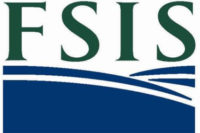 While FDA is responsible for safeguarding the nation’s food supply, it has increasingly relied on state agencies to conduct inspections on its behalf. However, the 2009 Salmonella outbreak caused by contamination at a Peanut Corporation of America facility, inspected several times by a state agency working for the FDA, shows a degree of FDA oversight is missing, according to the recent report, Vulnerabilities in FDA’s Oversight of State Food Facility Inspections, published by the Department of Health and Human Services Office of Inspector General (OIG).
While FDA is responsible for safeguarding the nation’s food supply, it has increasingly relied on state agencies to conduct inspections on its behalf. However, the 2009 Salmonella outbreak caused by contamination at a Peanut Corporation of America facility, inspected several times by a state agency working for the FDA, shows a degree of FDA oversight is missing, according to the recent report, Vulnerabilities in FDA’s Oversight of State Food Facility Inspections, published by the Department of Health and Human Services Office of Inspector General (OIG).
Because of concerns about food facility inspections conducted by state agencies, this review and report was requested by the House Committee on Appropriations, Subcommittee on Agriculture, Rural Development, FDA and related agencies. The purpose of the review was four fold:
1. To determine the extent to which the FDA enters into contracts with states to inspect food facilities.
2. To determine the extent to which FDA ensures that states complete the inspections required by their contracts.
3. To determine whether FDA ensures state inspections are properly classified and violations are remedied.
4. To determine the extent to which FDA audits state inspections and addresses deficiencies identified by these audits.
FDA oversees state inspections through its Contract Inspection Audit Program, which is designed to verify states conduct inspections that satisfy the requirements of their contracts. FDA requires a minimum of 7 percent of a state’s contract inspections be audited each year. This minimum percentage (also known as the minimum audit rate) ensures states are conducting adequate inspections to meet the conditions of the contract.
The findings of the review uncovered several issues. In fiscal year (FY) 2009, 59 percent of FDA’s food inspections were conducted by state inspectors compared to only 42 percent in FY 2004.
In eight states, FDA failed to ensure the required number of inspections was completed. In addition, FDA paid for many inspections that were incomplete. The eight states were responsible for a total of 2,170 inspections; however, these states failed to complete the inspections required in their contracts. When inspections are incomplete, FDA’s ability to identify facilities with potentially serious food safety violations is compromised. In four additional states, FDA paid for inspection visits, though payment for visits was not specified in the states’ contracts.
FDA did not ensure all state inspections were properly classified and all violations were remedied. FDA officials responsible for 11 of 41 states were unclear how to properly classify contract inspections. In these 11 states, FDA officials reported they would not assign official, action-indicated classifications to state inspections under any circumstances, contrary to FDA guidance.
Finally, FDA failed to complete the required number of audits for one-third of the states and did not always follow up on identified systemic problems. For 14 of 41 states with contracts, FDA did not complete the required number of audits and, therefore, failed to meet its minimum audit rate.
The report recommendations suggest FDA:
• Ensure all contract inspections are completed, properly documented and appropriately paid for
• Ensure contract inspections are properly classified in accordance with FDA guidance
• Ensure all inspection violations are remedied by routinely tracking all actions taken to correct violations
• Ensure the minimum audit rate is met in all states
• Address any systemic problems identified by audits.
FDA agreed to most of the recommendations, but did note that certain violations may not be suitable for inspection follow-up, and that other approaches may be used to track such violations.
To read the entire report, download it from the Office of Inspector General.




